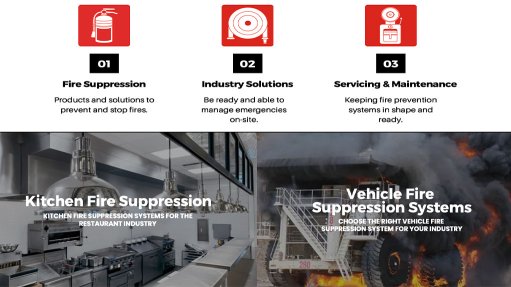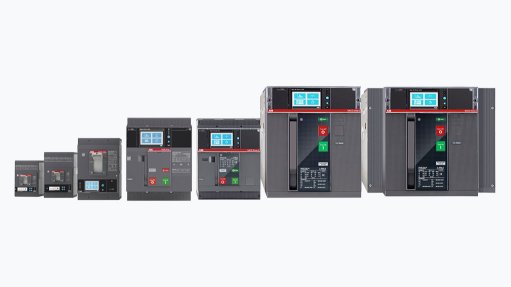Is industry hiding its light under the proverbial bushel?
This article has been supplied.
( Virtual Showroom )The Southern Africa Institute of Mining and Metallurgy’s (SAIMM’s) 2024 Annual General Meeting held in August 2024 celebrated the Institute’s 130th birthday and 70 years since the Journal was first published. This celebration comes at a time when the mining industry is facing challenges regarding future funding and limited opportunities for new developments largely owing to environmental lobbying and soaring financial costs.
It is in this context that this Institute has an important role to play. Following on from the commentary penned by Professor Dick Stacey in the August 2024 edition of this Journal, it is now my pleasure to reverberate the relevance of the Institute as the collective intellectual face of the mining and metallurgical industries and to emphasise the important functions the Institute performs for these industries. Namely, the Institute provides an essential gathering point around which the academic and industrial communities network, share common interests, promote common goals towards advanced knowledge, develop technical professionalism and ensure industry-wide practices regarding safety, health and environmental matters. The sharing of such goals can only be met through the hosting of networking opportunities which serve to centralise the mechanisms for activities of common interest.
The critical functions that the Institute provides include the hosting of conferences and related events in a wide range of topics, and the production of the Journal – an internationally accredited publication which presents papers highlighting the latest technical advancements of the day, both in Southern Africa and globally. It also summarises past and current advancements by way of valuable and extensive reviews.
Linked to these functions is the fact that the Institute serves two realms of the mining and metallurgical fraternity – industry and academia. Both attend conferences and related events, but generally only those in academia tend to contribute papers to the Journal. Understandably, those active in industry have little time or incentive to spend on non-practical or non-commercial activities, whereas academicians are rewarded well for their efforts in sharing knowledge to as wide a community as possible through an accredited publication.
As Professor Stacey once quoted, “in the mining and metallurgical industries there are regular examples of significant achievements whereby problems have been solved. Publication of the basis of these achievements, and the causes of the problems, could be of considerable value to other companies in the broader mining sphere”. On this basis, Stacey calls for more contributions from the industrial sector.
I too hope that those in industry, namely those at the “coal face”, will consider increasing their paper contributions by publishing results of relevant, unusual and successful achievements in the Journal. This would inevitably prove of importance to wider communities both locally and internationally and such publications would be accessible on a global and permanent basis.
One of the incentives to publish industrial mining and metallurgical information is to achieve recognition for such information, which in turn leads to ensuring the advancement of practices in the relevant industries. Recognition is manifested by the Institute through the awarding of gold and silver medals to papers of outstanding significance and value. Medals for such papers are awarded annually at the Institute’s August AGM.
I often wonder whether those in the general mining and metallurgical communities actually read and appreciate the relevance of high-value papers and the impact that such information can have on their sectors. Allow me to summarise two such examples.
The most recent paper to be awarded a gold medal at the 2024 AGM was co-authored by Professor Francois Malan and Professor John Napier from the University of Pretoria working in tandem with the platinum industry. In this case, the paper was entitled Numerical simulation of large-scale pillar layouts with reference to platinum mining. The purpose of the paper was to outline an efficient numerical strategy that can be used to assess large-scale pillar layout performance while retaining the ability to modify individual pillar constitutive behaviour. Although computational solution techniques are impressive, a major difficulty had been encountered in assigning suitable material properties to the pillars and in devising information of the layered rock strata overlying the mine excavations. The proposed method is applied to compare estimated average pillar stress values against values determined by detailed modelling and against observed behaviour. Such information has undoubted significance in terms of efficiency, safety and cost for the platinum mining industry.
A second paper, penned by Professor Josias van der Merwe (sadly recently deceased) working in collaboration with Eskom, was awarded a silver medal in 2021. Entitled Investigation of the mechanism for fireside corrosion in coal-fired boilers in South Africa, this paper presented the underlying causes leading to the coal fleet’s chronic boiler-tube failures. The consequences of such failures have played a major role in loadshedding thereby contributing significantly to the slowing of industrial growth and techno-economic development in South Africa.
As highlighted by Neil Stacey in his Ground Up editorial in December 2022, this latter paper presented far more fundamental and previously unknown reasons for the failure rate of metal in Eskom’s boilers. In effect, the impact of sub-standard coal – coal running at 2% sulfur, a value well above the specification of 1.3% – along with low oxygen partial pressures (to keep NOx levels down) – have created conditions that promote the formation of iron sulfides (FeS), a brittle metal. This component compromises the strength of the boiler tubes which then fail in the harsh environment of Eskom’s boilers, thereby resulting in stoppages. This has led to significant loadshedding with major impacts on every sector across the country.
I hope that these examples provide impetus for those in the mining and metallurgical industries to expand their roles in publishing papers of technical significance in the SAIMM Journal.
It is against this background that topic-themed editions of the SAIMM Journal have now been introduced and will be published between general-paper editions. This will hopefully ensure even more contributions and from wider sources across the academic, technical, industrial and professional sectors in future, thereby leading to further knowledge-sharing across the mining and metallurgical industries – both in this country and abroad.
Article Enquiry
Email Article
Save Article
Feedback
To advertise email advertising@creamermedia.co.za or click here
Announcements
What's On
Subscribe to improve your user experience...
Option 1 (equivalent of R125 a month):
Receive a weekly copy of Creamer Media's Engineering News & Mining Weekly magazine
(print copy for those in South Africa and e-magazine for those outside of South Africa)
Receive daily email newsletters
Access to full search results
Access archive of magazine back copies
Access to Projects in Progress
Access to ONE Research Report of your choice in PDF format
Option 2 (equivalent of R375 a month):
All benefits from Option 1
PLUS
Access to Creamer Media's Research Channel Africa for ALL Research Reports, in PDF format, on various industrial and mining sectors
including Electricity; Water; Energy Transition; Hydrogen; Roads, Rail and Ports; Coal; Gold; Platinum; Battery Metals; etc.
Already a subscriber?
Forgotten your password?
Receive weekly copy of Creamer Media's Engineering News & Mining Weekly magazine (print copy for those in South Africa and e-magazine for those outside of South Africa)
➕
Recieve daily email newsletters
➕
Access to full search results
➕
Access archive of magazine back copies
➕
Access to Projects in Progress
➕
Access to ONE Research Report of your choice in PDF format
RESEARCH CHANNEL AFRICA
R4500 (equivalent of R375 a month)
SUBSCRIBEAll benefits from Option 1
➕
Access to Creamer Media's Research Channel Africa for ALL Research Reports on various industrial and mining sectors, in PDF format, including on:
Electricity
➕
Water
➕
Energy Transition
➕
Hydrogen
➕
Roads, Rail and Ports
➕
Coal
➕
Gold
➕
Platinum
➕
Battery Metals
➕
etc.
Receive all benefits from Option 1 or Option 2 delivered to numerous people at your company
➕
Multiple User names and Passwords for simultaneous log-ins
➕
Intranet integration access to all in your organisation




















